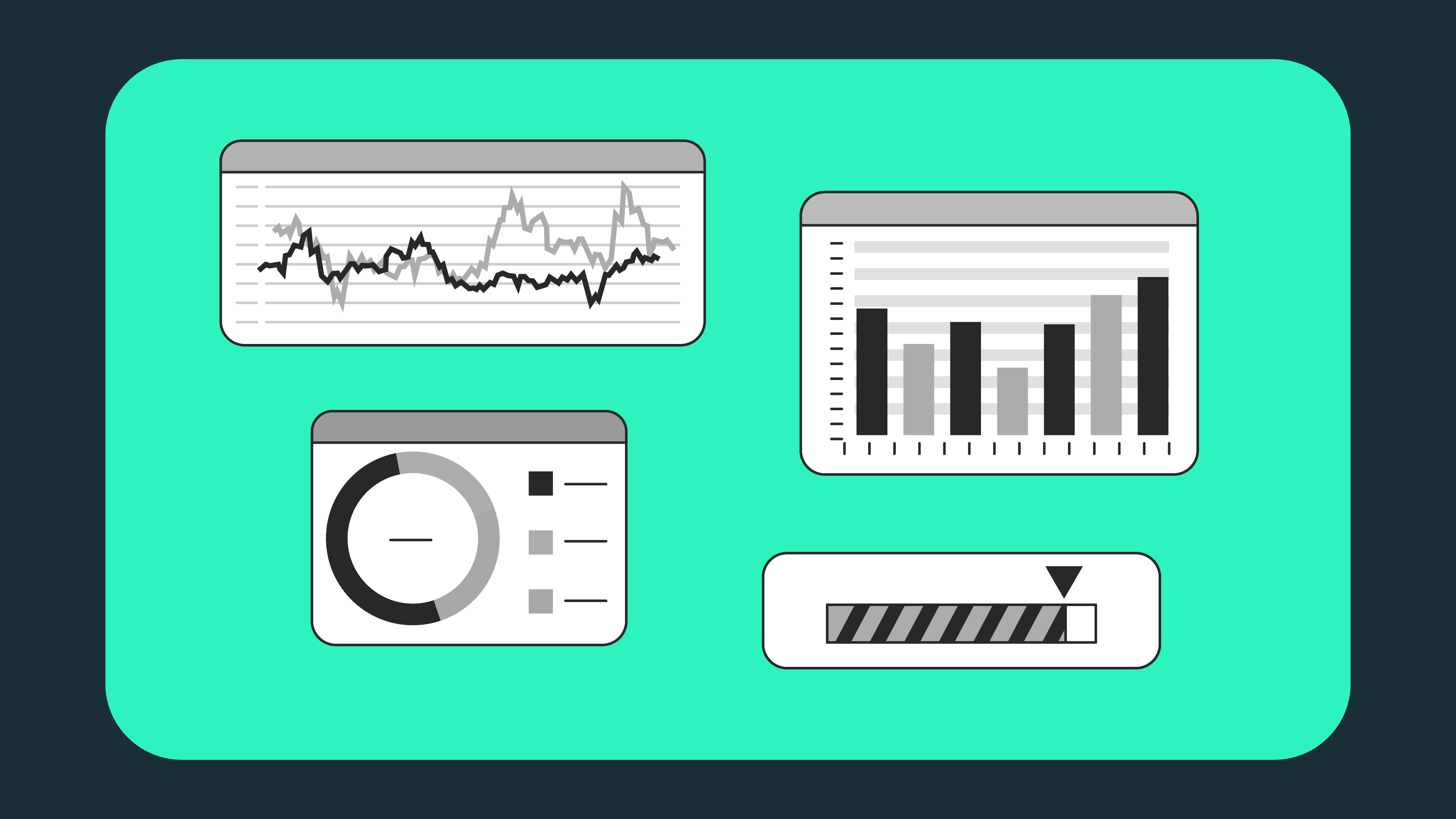How To Start Trading Stocks And Shares In The UK

Trading in stocks and shares in the UK used to be a thing only done by professionals, but times have changed a lot. Trading stocks is now something accessible to everyone, and there’s so many websites online that teach the basics.
Now, there are routes for anybody to learn how to trade in stocks and shares. Whether you want to do it as a side hustle to earn a bit of extra income or train to do it full-time, there are opportunities available.
In this guide, we’ll take you through everything you need to learn how to start trading in stocks and shares. We’ll cover the steps for setting up an account, the fundamentals of the market, risk management, and choosing a broker.
Please note this article is not financial advice - please always carry out your own research and due diligence.
The Basics Of Stocks And Shares

Before we plunge into the ‘how’, let’s take a look at the main concepts of trading stocks and shares.
Are stocks different from shares?
Truth be told, they both amount to the same thing and are interchangeable. It basically boils down to how you want to express your ownership of part of a company.
- Stocks amount to ownership within a company. If you buy any stock, you become a part owner of that company.
- Shares are individual units of that stock. For example, if a business issues 100 shares and you buy 10, you then own 10% of the company.
Trading and investing
- Trading - this is when you buy and sell shares on a frequent basis, with the goal of making short term profits from price fluctuations.
- Investing - this is when you buy shares and hold on to them for longer periods, on the premise of growth potential.
Terminology
- Dividends - these are payments made by businesses to people who own shares (shareholders) from the profits they make.
- Volatility - a term used to describe how significantly and rapidly share prices fluctuate.
- Capital Gains - when you sell a share for a profit it’s known as capital gains.
- Liquidity - how quickly and easily shares can be bought and sold without impacting the share price.
Overview Of The UK Stock Market
There are two main markets in the UK where stocks and shares can be traded:
1 - The London Stock Exchange (LSE)
- The LSE is the largest and primary stock exchange in the UK.
- It lists huge companies, such as Shell, BP, Unilever, HSBC and Rentokil.
- The LSE includes the FTSE (Financial Times Stock Exchange) 100 and the FTSE 250. The FTSE 100 encompasses the 100 largest companies and the FTSE 250 covers the medium sized companies.
2 - Alternative Investment Market (AIM)
- A subsidiary of the LSE, aimed at smaller, growth oriented firms.
- Suits higher risk, speculative trading.
6 Steps To Start Trading Stocks In The UK

Okay, it’s time to get into the mechanics of how to begin trading stocks and shares in the UK.
1. The Basics
Here are some things to be aware of before you start:
Stock price movement
- Stock prices go up and down based on demand, supply and earnings reports.
What affects stock prices
- Company performance, interest rates, economic data and global events.
Types of orders
- Limit order: executes only at a specific price or higher.
- Market order: executes instantly at the current price.
- Stop-loss order: automatically sells stock if its price drops to a certain point.
2. Pick A Trading Platform
Before you can trade in stocks and shares, you need to be able to access the stock market. In order to do that, you’ll need a broker or a trading platform.
Here’s some things to consider when you decide which broker or platform to use:
- Fees / commission: check the fees with different brokers as some charge per trade and others won’t charge commission on trading.
- FCA registration: make sure that if you use a broker, they’re regulated by the FCA (Financial Conduct Authority).
- Open markets: don’t restrict the markets you can access. Use a platform that gives you access to global stock markets.
- Good user app: it’s vital that you have an app that is easy and user-friendly in order to process your trades correctly.
- Market news: try to find platforms that offer analysis tools, news and real-time data.
Reputable UK Trading Platforms
The good news is that there are plenty of trustworthy trading platforms to choose from:
- eToro: commission-free with community features that will help you learn the ropes.
- Freetrade: commission-free trading with a good user-interface, and extremely secure (arguably too much so!).
- Hargreaves Lansdown: a long-serving provider with good support and tools. Tends to focus on long term investments.
- IG Group: more suited to experienced stock traders.
- Interactive Investor: charges fees, but these are fixed on a monthly basis, making it a good option for frequent traders.
3. Register Your Trading Account
Once you’ve done some research on each platform and decided which one(s) to use:
- Open the account: provide all the personal information required and complete the necessary ID validation, KYC (Know Your Customer).
- Deposit trading funds: put money into your account so you’re ready to start trading.
4. Decide On A Trading Strategy
There are different types of trading strategies, so it’s important you decide which one suits your needs:
- Swing trading: sitting on stocks for weeks to target medium-term trends.
- Scalping: extremely short-term trades, making use of minimal price changes during the day.
- Day trading: similar to scalping, this is the practice of buying and selling shares on the same day to make the most of smaller price changes.
- Position trading: buying for longer term trading.
5. Research
Taking a punt on a big name or something emotional is unlikely to pay off. It’s crucial to thoroughly research the markets you’re considering for trading.
- News: always keep up-to-date with market news, as any announcements can have a significant impact on stock prices.
- Analysis: use the information out there. Charts and price patterns can help to forecast potential stock price movement.
- Company analysis: check earnings reports and financial statements.
6. Make Your First Trade
After you’ve done the research and chosen which stock to trade:
1. Find the company on the trading platform.
2. Decide which ‘Order Type’ you want to use (limit, market or stop-loss).
3. Set yourself some risk mitigation parameters.
4. Complete the trade.
Risk Management
In order to protect your funds, you need to manage the risk when trading in stocks and shares.
Here’s some tips to help mitigate your risks:
Spread Your Investment Portfolio
- Don’t put all of your eggs in one basket. Spread your trades across different companies and industries.
- Spreading your portfolio reduces the risk if one stock plummets.
Bankroll
- It’s recommended that you don’t invest more than 2% of your available funds in one trade.
- This will help keep you from wiping out your funds with a bad trade.
Stop-Loss Orders
- Set up parameters that exit trades at set loss levels.
- This can help keep losses at a manageable level.
Are There Taxes When Trading Stocks In The UK?

In simple terms, yes. The government will always want a cut of your profits, and trading in stocks and shares is no different.
Let’s take a look at the possible tax implications you may face:
CGT - Capital Gains Tax
- The allowance: you’re entitled to £3,000 tax-free (2025/26 tax year).
- Basic rate tax: 18% payable on any gains above the £3,000.
- Higher rate tax: 24% payable on any gains above the £3,000.
Tax On Dividends
- The allowance: you are allowed a tax-free allowance of £500.
- Basic rate tax: 8.75% payable on any gains above £500.
- Higher rate tax: 33.75% payable on any gains above £500.
Stock And Shares Trading Resources
There are some really great resources out there that can help when it comes to trading in stocks and shares:
- Market news: Bloomberg, Financial Times, Reuters etc.
- Stock screeners: allow you to filter stocks on criteria (Yahoo Finance, TradingView and Finviz)
- Educational websites: sites like Babypips and Investopedia offer help with strategies for trading in stocks and shares.
Conclusion
Trading stocks and shares in the UK offers great potential to make money when done correctly. However, a little like betting on a cert in horse racing, there are no guarantees. It’s vital that you understand what you’re doing and research the markets thoroughly.
Before you begin risking your own funds, practice trading with a demo account to familiarise yourself with the process and gain confidence. Sites like eToro, Investopedia and Trade Nation offer free demo accounts and guidance from experts.
Because of its flexibility, trading in stocks and shares can be done as a side hustle or on a more permanent basis. It all depends on how much time you want to dedicate to it.
As an alternative, if you’re looking for extra income from a side hustle, consider trying Matched Betting, which can guarantee tax free income when done correctly.
